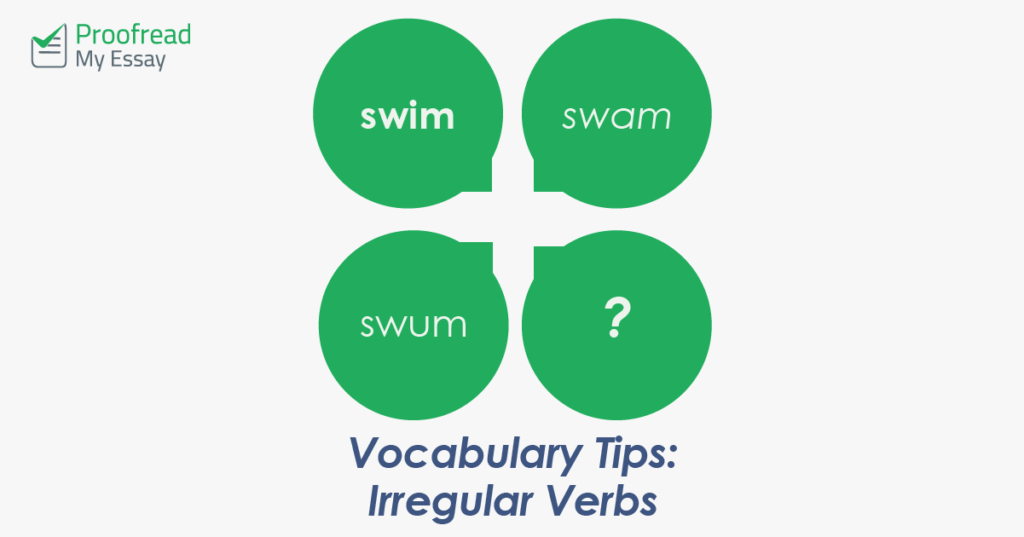While some verbs happily obey the ‘rules’ of grammar, irregular verbs do things their own way. They are the rebels of the grammar world.
However, while we appreciate this rebellious attitude, irregular verbs are often misused. To avoid errors, you therefore need to know how they work.
Regular Verbs
Before we get to the rule-breakers, we should take a look at how regular verbs behave. Essentially, regular verbs follow a pattern when forming past tenses.
With simple past tense verbs and past participles, this usually means adding ‘-ed’ (e.g. rain → rained). Other examples include:
|
Base Verb Form |
Simple Past Tense |
Past Participle |
|
Jump |
Jumped |
Jumped |
|
Dance |
Danced |
Danced |
|
Imagine |
Imagined |
Imagined |
|
Swallow |
Swallowed |
Swallowed |
As you can see, with regular verbs, the simple past tense and past participle forms are the same.
Irregular Verbs
With irregular verbs, you cannot rely on any single pattern working all the time. Nor are the simple past tense and past participle forms always the same.
The verb ‘eat’, for example, becomes ‘ate’ in the simple past tense (not ‘eated’). Similarly, the past participle of ‘eat’ is ‘eaten’. Other examples include:
|
Base Verb Form |
Simple Past Tense |
Past Participle |
|
Swim |
Swam |
Swum |
|
Go |
Went |
Gone |
|
Think |
Thought |
Thought |
|
Begin |
Began |
Begun |
As you can see, there is no regular pattern here; in some cases, such as ‘go’ and ‘went’, there is no obvious connection between different forms of the same verb at all!
Find this useful?
Subscribe to our newsletter and get writing tips from our editors straight to your inbox.
This can make spelling the past tense and past participle forms of irregular verbs difficult, especially since there are a lot of irregular verbs. Practice is the best way to avoid making errors, but you can always look up words if you’re not sure whether they have irregular past tense and past participle forms.
The Trickiness of ‘Be’
Finally, the verb ‘be’ deserves a special mention. Not only is it one of the most common verbs in English, it’s also one of the most irregular. We can see this if we look at some of its variations:
|
Variations of ‘Be’ |
First Person Singular/Plural |
Second Person Singular/Plural |
Third Person Singular/Plural |
|
Infinitive |
To be |
To be |
To be |
|
Present Tense |
Am/Are |
Are |
Is/Are |
|
Past Tense |
Was/Were |
Were |
Was/Were |
|
Present Participle |
Being |
Being |
Being |
|
Past Participle |
Been |
Been |
Been |
Even this doesn’t cover all the situations in which ‘be’ plays by its own rules (we’ll save the subjunctive mood for another day). This can be confusing, but as long as you’re careful to proofread your work, you should avoid mistakes.
